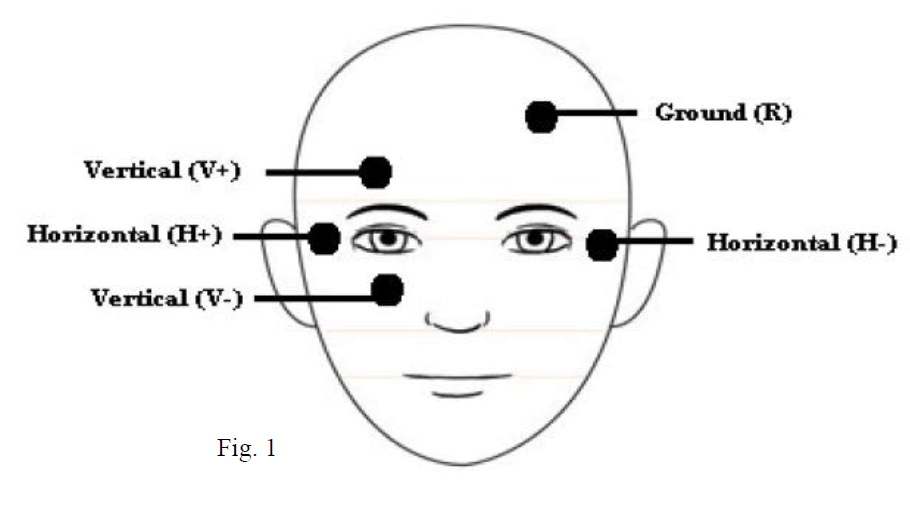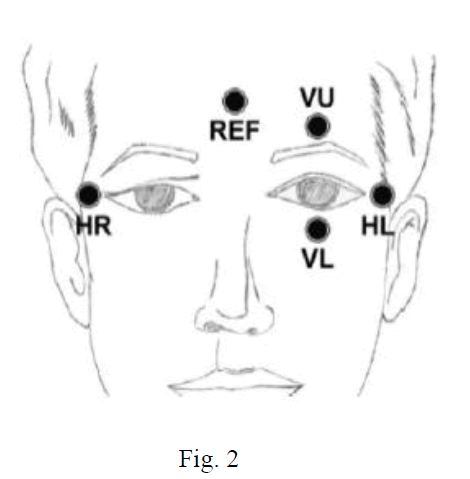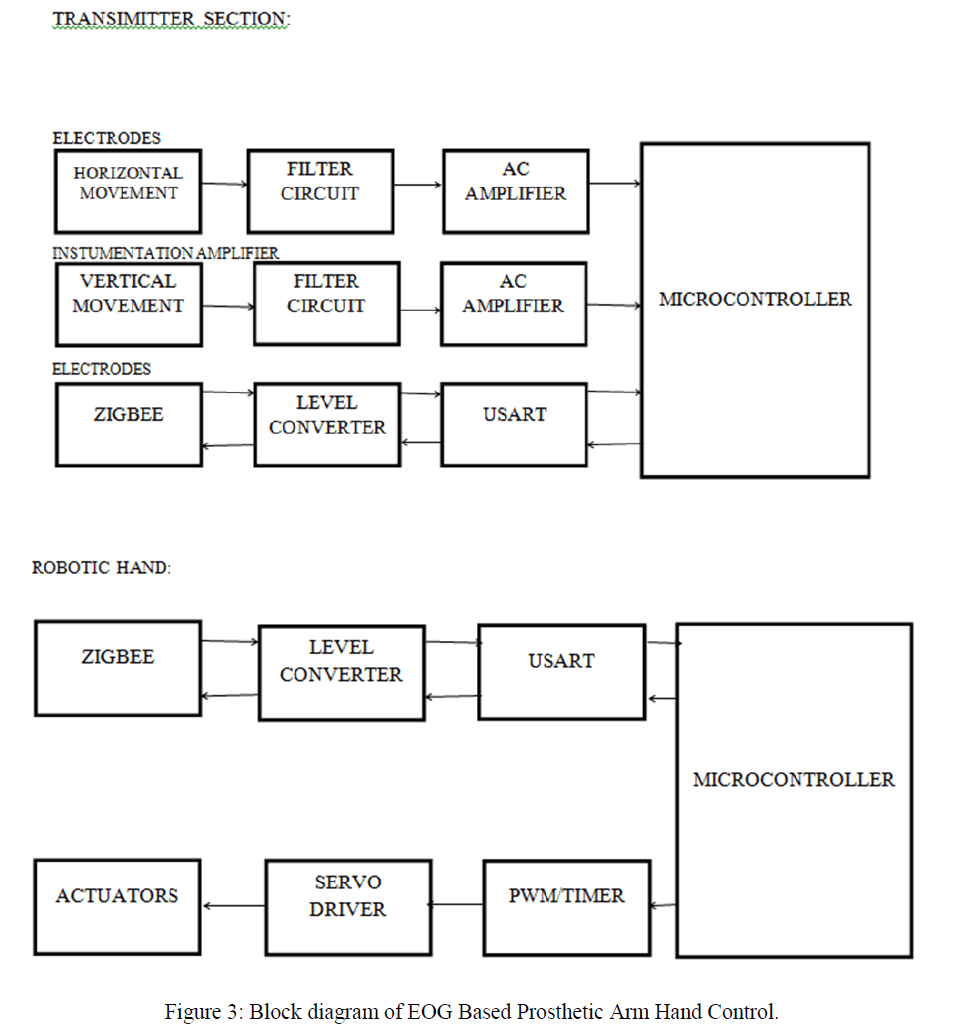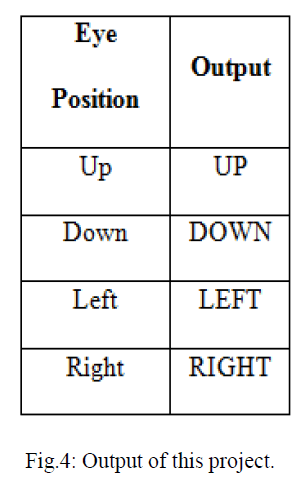ISSN ONLINE(2319-8753)PRINT(2347-6710)
ISSN ONLINE(2319-8753)PRINT(2347-6710)
Veena J Ukken1, S.Vaishnodevi2 and S. Mathankumar3
|
| Related article at Pubmed, Scholar Google |
Visit for more related articles at International Journal of Innovative Research in Science, Engineering and Technology
Electrooculography (EOG) based HID (Human Interactive Device) has the potential to control a Robotic hand. The project presents a novel method to control robotic hand with the help of eye movements. Using this system, we can control the hand movements left, right, pick and place etc. As a result of road traffic accidents, stroke, etc., a lot of people have become disabled following which many of them have lost their ability to control their environment and communicate with others by conventional methods. Studies on such groups of persons with severe disabilities have shown that many of them retain the ability to control their eye movements which could be used to develop a new robotic hand control. This system can be used by persons with disabilities for environmental control, as a source of information as well as for entertainment. The device can be found most useful by handicapped people who can no longer control the robotic hand using their hands. As the device relies on user’s eye movements, it can be used even by patients who are paralyzed from shoulder downwards. In recent years, EOG based HID is becoming the hotspot of bio-based HID research.
Keywords |
| Electrooculography (EOG), HID (Human Interactive Device), eye movements, electrodes, robotic hand |
INTRODUCTION |
| A disabled person always wishes to lead a life like a normal human being. The term disability broadly describes impairment in a person’s ability to function, caused by changes in the various subsystems of the body, or to mental health. The degree of disability may range from mild to moderate, severe or profound. A person may also have multiple disabilities. |
| A physical impairment is any impairment which limits the physical function of limbs, bones or gross motor ability. To overcome a disability, assistive technology can be made use of. It in turn is a generic term used for devices and modifications for a person or a society. It promotes people to perform tasks that they had greater difficulty accomplishing, by providing enhancement to or by changing methods of interaction with the technology. The prosthetics were in use even as early as 17th century. |
| The Electrooculography (EOG) based HID is one of the most useful systems for providing information about the human eye activity by detecting changes in eye position. EOG is based on the fact that the eye acts as an electrical dipole between the positive potential of cornea and negative potential of retina. It is the most useful system available because of its low cost to implement, simplicity and high performance. |
| We move our eyes constantly during our day to day activities to keep our line of sight at a point of interest. In order to generate an eye movement along any axis, there are three opposing pairs of muscles attached to the globe of the eye. These antagonizing muscle sets work to move eye horizontally, vertically as well as for the rotational movement of the eyeball. |
| There are four different types of conjugate eye movements. These eye movements fall into two specific categories namely: |
| 1. Reflex Eye movements |
| 2. Voluntary Eye movements. |
| Reflex eye movements function to stabilize the position of the eye in space during the head movements, while voluntary eye movements function to redirect the line of sight so as to follow a moving target or to attend to a new target of interest. |
ELECTRO-OCULOGRAPHY (EOG) |
| It was discovered in the 1920’s that one could record the electrical activity by placing the electrodes on the skin in the region of the eyes and that the electrical activity changed in synchrony with the movements of the eye in the head. In contrary to the initial belief that these potentials were action potentials in the muscles, now it is generally agreed that they are electrical potentials that are generated by the permanent potential difference that existed between cornea and the ocular fundus (cornea-retinal potential, 10-30mV: the cornea being positive and retina negative). But the recorded signals ranged from 15-200μV [1]. This potential difference is due to the presence of large number of active nerve fibers in the retina compared to the cornea [2]. This potential difference in turn sets up an electrical field in the tissues surrounding the eye. As the eye rotates, the field vector also rotates correspondingly. Thus eye movements can be detected by placing electrodes on the skin around the eyes. Horizontal eye movements can be best measured by placing the electrodes on the external canthi (bone on the side of the eye), while vertical movements can be best measured by placing electrodes on the lids. |
| Electrooculography (EOG) was a diagnostic test introduced in 1962 which had many advantages over the ERG including that the electrodes did not need to be in contact with the surface of the eye. The changes in the potential across the eyeball were recorded by electrodes kept on the skin during simple eye movements. |
MATERIALS & METHODS |
| The fundamental components of the proposed device are wet electrodes, a wireless EOG acquisition device, microcontroller unit, display unit, ZigBee modules and a robotic arm. |
ELECTRODE SYSTEM |
| The development of sensors to record eye movement is still a hot topic of research. Traditionally for recording EOG, five Ag/AgCl self-adhesive electrodes are placed in such a way that: (1) one above and another below to record the vertical eye movements; (2) one pair next to the lateral canthus for recording horizontal eye movements and (3) one over a neutral point, which is acting as a reference electrode. |
 |
| The horizontal movements are HR: Horizontal Right and HL: Horizontal Left, while vertical movements include VU: Vertical Up and VL: Vertical Low. The fifth electrode, i.e. the one to be kept on the neutral point is termed the reference electrode (REF). Positions of electrodes to register EOG signals are shown in Fig. 2. Here we are making use of wet electrodes. |
 |
EOG ACQUISITION |
| The EOG based system will provide more information about eye activity by detecting changes in eye position. EOG signals are easier to detect when compared to EEG. These signals are very useful and have relatively low potential. Many varieties of communication devices are presently available in market for people with neurological disabilities. But most of them are unsuitable due to their various drawbacks and the cost of implementing. In the present scenario, the system available for such individuals is the EOG based system due to its cost effectiveness, simplicity and high performance. |
INSTRUMENTATION AMPLIFIER |
| The AD620 is a low cost, high accuracy instrumentation amplifier which requires only one external resistor to set gains. It offers low power, thus making it a good fit for the battery powered, portable applications. The AD620, with its high accuracy, low offset voltage and offset drift is ideal for use in precision data acquisition systems. Furthermore, the low noise, low input bias current and low power of the AD620 make it well suited for medical applications. It works well as a preamplifier due to its low input voltage noise as well as input current noise. The instrumentation amplifier is the component that receives signals from electrodes. Other features like low DC offset, low drift noise and very high common mode rejection ratio plays a key role when great accuracy as well as stability are required [3]. |
OPERATIONAL AMPLIFIERS |
| The LM741 series are general purpose operational amplifiers used in this project. The high gain and wide range of operating voltage provide superior performance in integrator, summing amplifier, and general feedback applications. Its features include short circuit protection, excellent temperature stability, internal frequency compensation and high input voltage range. |
FILTERS |
| The two different types of filters used in this project are the low pass filters and high pass filters. Lots of noise signals will be present in the EOG signal obtained from the electrodes. These filters will help to remove such unwanted noise signals. A high-pass filter is an electronic filter that lets the signals with a frequency higher than a certain cut-off frequency to pass through while attenuating the lower frequencies, while the low pass filter functions vice versa. The amount of attenuation for each frequency depends on the filter design. |
MICROCONTROLLER |
| PIC 16F877A microcontroller is the one used in this project. The term PIC refers to the Peripheral Interface Controller which is a family of Harvard architecture microcontrollers made by microchip technology. The ease of use, flash memory technology that can write/erase thousands of times makes it more efficient for application purpose. In addition, the low cost, low power consumption, easy handling and flexibility make PIC applicable in areas where microcontroller were not previously considered. The PIC168F77A Microcontroller is programmed in order to control the devices. |
| PIC 16F877A microcontroller converts the analog signal to digital signal using 10 bit multichannel ADC. USART (Universal Synchronous/Asynchronous Receiver/ Transmitter) with 9 bit address detection of PIC 16F877A facilitates communication using serial port. Three timers are there in PIC: Timer 0, Timer 1 & Timer 2. Two capture/ compare, pulse width modules are also present. A level converter is used to convert appropriate voltage levels. |
ZIGBEE |
| ZigBee is a wireless technology developed as an open global standard to address the unique needs of low-cost, low-power wireless M2M networks. Creating wireless networks can be done using a variety of RF protocols. Some protocols are proprietary to individual vendors, while others are industry standards. This application note will explore the ZigBee protocol industry standard for data transmission, and the IEEE protocol on which it was built. ZigBee is a protocol that uses IEEE 802.15.4 standard as a baseline and adds additional routing and networking functionality. In this project, ZigBee is used as transmitter as well as a receiver. |
ROBOTIC ARM |
| A robotic arm is a robotic manipulator, usually programmable with similar functions to a human arm [4]. Servomotors are used for joint rotation in this project. The robotic arm could be controlled through controller interfacing, thus making it possible to perform various actions like pick and place, etc. |
ACTUATOR |
| An actuator is a device that brings about the mechanical movements required for any physical process. Internally, actuator can be broken into two separate modules: Signal amplifier and Transducer. |
SERVOMOTORS |
| When higher torque and precise control are required, servomotors are the best option. They provide higher torque to all speeds, versatile speed control, very low drift, ability to reverse directions rapidly and smoothly, etc. They may be AC or DC. In fact practically any AC or DC motor can be converted to a servomotor by regulating it electronically and using position and force feedbacks. Since the servomotors are driven through this electronic control, they can be easily interfaced with microprocessors and other high level controlling devices quite easily. |
BLOCK DIAGRAM |
 |
RESULT AND DISCUSSION |
| In this project five wet electrodes were used to record EOG signals. One as reference and other four electrodes to record EOG signals from four channels. First part of our experiment was a training segment on EOG measurement system and corresponding robotic arm movement. Second part of experiment was giving trials per direction (up, down, left & right). EOG signals are produced according to the movement of the eyes and based on it; robotic arm is controlled by microcontroller as per the program stored in it. |
| According to the eye movements, EOG signal is generated which is then captured by electrodes and fed to EOG acquisition device which contains filters, amplifiers, etc. EOG signal is then filtered and amplified and passed onto a microcontroller. A ZigBee transmitter will then transmit the EOG signals to the robotic arm component. The data is then received by the ZigBee receiver and is then fed into the microcontroller which is already programmed. The LCD display will produce the output for the corresponding eye movements. Based on the program stored in the microcontroller, the robotic arm will move in accordance with the eye movements. |
 |
| Thus a low cost, eye movement-based detection device is used to control a robotic arm. This device is mainly developed for disabled people with severe nervous system injuries and disorders. This project is based on the acquisition of EOG signal which is comparatively inexpensive, efficient in terms of linear relationship of the signal over the eye movements that makes it suitable for this application. |
CONCLUSION |
| In this paper, a wireless EOG-based human-machine interface is developed as to detect eye movements in four directions. It has been successfully designed which could in turn be used to control a robotic arm. The usage of this device is simple and will take only a short time to learn. EOG signal has a good stability compared with other biopotential signals. We have implemented a micro-controller based system instead of the conventional computer based system. Our proposed system is capable of transferring data wirelessly and the proposed method can also be used by a single eyed-individual. The device was successful in discriminating between the eye movements. This project will help handicapped or disabled people with severe nervous system injuries and disorders to live more independently. It will definitely help them to a good extent to interact with their environment. |
References |
|